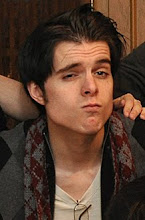I wouldn't go to such lengths to elucidate the success of Star Wars both as a film and as a phenomenon if that success was not predicated by one specific element. Characterization raised Star Wars above the level of any genre movie before it and made something as niche as science fiction acceptable to a wide audience in a way that was unprecedented for the time. George Lucas took what was essentially a simple hero tale and made it flourish thanks in large part to his ability to flesh out a world of believable locales and peoples. Science fiction before the release of Star Wars was generally very clean and free of imperfection. What Lucas so brilliantly did was inject 'character' into the world he created. Things were dirty and used. Luke tells his Uncle Owen that the robots (droids) they were purchasing were falling apart. The Millenium Falcon, perhaps the most beloved and well-known fictional space vessel, is bluntly referred to as 'a piece of junk'. Far from degrading the appeal of these elements, viewers felt drawn to them. We can all relate to a car that doesn't run like we wish it did, and so the Millenium Falcon became the beloved junker car everyone couldn't help but champion. This same character was essential in Mos Eisley spaceport. The Cantina scene where Luke runs afoul of a pair of alien criminals feels at once exciting and real in its gritty portrayal. The direct contrast of the comparatively sterile Galactic Empire and their spotless Death Star effectively tells the audience everything they would need to know about the villains without ever uttering a word. Every setting in Star Wars has a history without ever showing it; something that can best be defined as the essence of 'character'.
Of course it would be a misstep to hang all of the successful characterization on the fully realized worlds alone. George Lucas populated his fantastical space-action film with relatable characters that served not only as capable protagonists, but at the same time as cipher personalities on which the viewer can project their own aspirations for adventure. Luke Skywalker was the young dreamer who imagined greatness, but found himself thrust into circumstances much bigger than one could fathom. Princess Leia was the freedom fighter who believed clearly in a greater cause, but at the same time served as the plucky girl every boy wanted to meet and every girl wanted to be. Perhaps the most effective of characters in all of Star Wars mythology is rogue smuggler Han Solo. Played to affable aplomb by Harrison Ford, Han is arrogant when he needs to be; serious when it is called for; funny at exactly the right time; and even a murderer when it serves his interests (Han shot first). Together these characters made the film what it was. The plot and theme of Star Wars were nothing that was not already present in old adventure serials like Flash Gordon or the like, but what made it stand out was a trio of young heroes who the audience cared about and wanted to succeed -- a sentiment that wouldn't exist had the characterization been lacking.
To a large extent, the success or failure of the many blockbusters to follow since the release of Star Wars has hinged on the strength of its character. It does not take much to think of many films that, despite their impressive visual effects and epic scale, have failed to stir audiences in the least. To make a blanket statement one way or the other commenting on the query of whether films that have followed Star Wars are better or worse at developing character in lieu of a bombastic action setting would be erroneous. The case for 'staying power' can always be cited; that many films come and go, but few are as known or remembered as Star Wars. The truth, I think, is actually better served when the success of characterization in a film is measured in how effectively it achieves the effortless balance of spectacle with the intimate believability of its characters and settings. To put a label on that unidentifiable something, a film needs 'heart'. Without 'heart' a movie feels lifeless, and the audience recognizes it and removes themselves from it. Perhaps by identifying what specifically made Star Wars 'work' in and of itself, we are better able to understand how and why the blockbusters that have been released since have succeeded and/or failed.


No comments:
Post a Comment